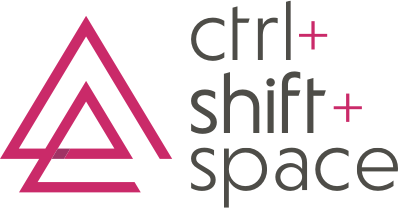So! You’ve been seeing huge success and you’re hiring employees faster than you can hold them, and moving to a bigger workspace is coming up fast. Fantastic!
Designing and moving into a new office is a big deal, exciting certainly, and perhaps a bit daunting too. Let's face it, a lot is at stake and you need to get it right — because you'll be there for many years to come.
Like many things in life, workplace transitions are often more complex than we think they’re going to be (like putting together Ikea furniture, ugh). Once you find the right space, typically some tenant improvements will be needed — like design and construction to reconfigure the building to meet your needs — plus you’ll need to source and purchase furniture and fixtures, not to mention prep your employees and equipment for the physical move itself, as well as get everyone settled and productive in your new space.
No matter how much you might want to, hiring an expert project manager might not be in the cards. But take heart! We’re here to help you avoid costly mistakes. So with that, here are 3 pitfalls to avoid when you need to DIY your office transition.
Pitfall #1: Unrealistic Budgets
As with most complex projects, no matter how granular and detailed your plan and budget are, unexpected costs will come up. Googling average costs for tenant improvements and online budgeting calculators are a good place to start, but each workplace planning project is unique, and there are a ton of factors to consider. Our advice is to always assume it will cost more, and always round up.
Here are some tactics you can use to dial in a realistic budget:
Forecast your finances, and then add 5 - 10%. Better to overestimate now than come up short later.
Bucket your budget. Prioritize and allocate your budget into categories, such as design and space planning, project management, furniture and appliances, IT/AV and security, permitting, and labor and materials. Keep them separate and discrete. Going over budget in one area may mean other aspects of your project pay the price later, as budgets will need to be reallocated.
Make sure you’re dealing with local information. Costs for architecture, design, and construction vary greatly by market, so basing your budget on an article written for a national audience can lead to surprises when you actually hire your service providers.
Account for freight and receiving/delivery/installation fees. Many buildings require after-hours deliveries which can almost double the cost in overtime labor. Be sure to check with your providers about ways to save.
Set aside funds for finishing touches. Be sure to account for things like kitchen or random office supplies like trash and recycling containers, plus other decor, like plants, area rugs, toss pillows and artwork. These will give your space personality, not to mention a more residential and welcoming appeal. Consider making 'welcome to your new workspace' kits to help everyone settle into the new neighborhood and office in order to minimize unproductive downtime as people adjust.
Pitfall #2: Underestimation of Time and Effort
Count on the fact that everything will take longer than expected — from negotiating and signing the lease; to space planning, designing, and construction; to selecting furnishings and implementing installations, and to the final move-in. Plan for at least 2 - 4 extra months and start the process much sooner than you think you ought to!
Here’s how to better estimate how much time and effort your project will demand:
Some landlords and real estate deals move more slowly than others. If your lease negotiation lasts longer than expected, and most often they do, you should assume that your space will be delivered later also.
Remember, this isn’t your living room couch. Buying commercial office furniture is very different from buying furniture for your home. For one thing, you need a whole lot more of it, but also, the commercial furnishings industry works differently. While online ready-made furniture retailers can usually ship within a few weeks, commercial (or contract) furniture is most often made to order. Occasionally, returns are accepted with a hefty restocking fee, but usually sales are final. The furniture specifying and ordering process will take longer, too. Plan on a month or two to select and finalize products, specify finishes/materials, review layouts and orders for accuracy, and handle paperwork plus the down payments before your furniture dealer will place your order. Once your order is placed into production, lead times can be 6 - 8 weeks plus transit, or longer if customized or coming from overseas.
Don't forget the punch list. There will always be unfinished matters that require attention, not only after move-in, but often at multiple stages and with multiple vendors. Your contractors will create a punch list after their work is done, listing all the little things they need to finish up, for example. Pay attention to details along the way and ask a lot of questions from every contractor, vendor, service provider, salesperson you work with to help reduce the amount of 'clean up' that will need to be done after everything is installed and to avoid disruption after the move.
Pitfall #3: Oversimplification of the Process and Details
If you’ve never experienced an office move, it can be surprising to learn how many people and processes are involved, and how time-consuming and effort-intensive it can be! Things like preparing construction documents or getting building permits involve collaboration between a lot of people and organizations. Certain steps need to come before other steps, so if one is delayed, the rest of the schedule will slip, too. Start the process too late or try to do things out of order, and you’re likely to have less-than-ideal results or worse.
Here are a few things to anticipate about the process:
Respect the order of operations, respect the timeline. There is a usual order of events in an office transition, and a usual pace. Permits need to be procured before construction can begin; electrical and plumbing needs to be inspected before the drywall can be put up; and paint only dries as fast as it dries. Consider having an expert review the construction drawings. They’ll be able to see issues that may make permitting difficult, or overlooked details that should be added to the plan now (like missing electrical outlets, or room for a vital piece of equipment).
The waterfall effect is real. Each question, change, and last-minute decision has impact on other areas of your project. Questions asked at the wrong time can set off a cascade of unanticipated work, extended timelines and surprise costs as well.
Respect your vendors’ workflows. Your service providers are likely juggling your project along with many other projects, bigger and smaller, all vying for priority. Understand that you can’t always be the top dog. Often you will just need to wait your turn.
It takes a village. For every question asked, drawing, bid revision, or change order a client requests, there are emails, phone calls, meetings, and lots of time spent researching and gathering information by seemingly countless people — who are also busy. So turnaround times are almost always going to be longer than you might want. Involve vendors early and consolidate your questions, so you can maximize your communication and get the most from your meetings, emails, and phone calls.
Whew! That’s a lot of information, and we’ve barely scratched the surface. Moving into a new office is an exciting step — it’s also a very big, very complex, very time-consuming process. But you can do it! Just remember to set realistic budgets, set accurate expectations for time and effort, and respect the process. Then you’ll come through your move with flying colors.
If you recognize the process will take more time, energy, and resources than you have to spare, don’t fret — we’ve got you covered! Our DIY workshops are designed to help those who need expert help, but whose budget won’t accommodate a full-service solution. We offer hourly crisis consults where we can help you with whatever decisions you’re facing. Or we can manage the whole process for you from start to finish. We’d love to be there for you, and our services always pay for themselves in the long run, so if you feel overwhelmed, let’s talk about working together.
Looking to improve your space?
It’s more fun without the headaches.


